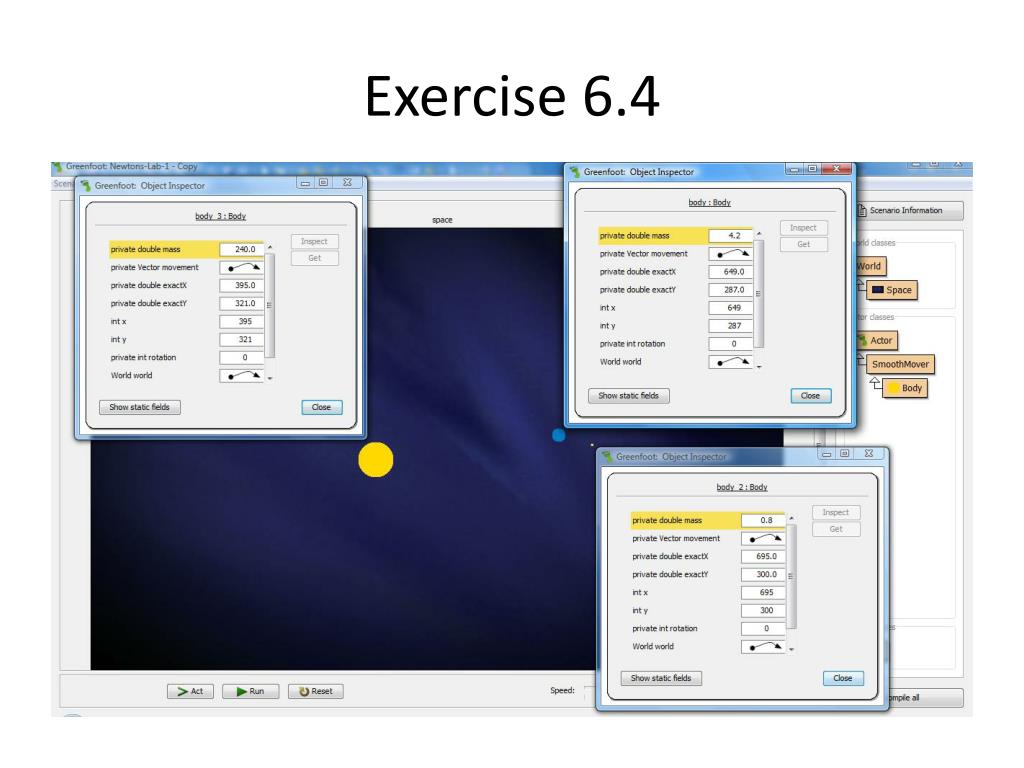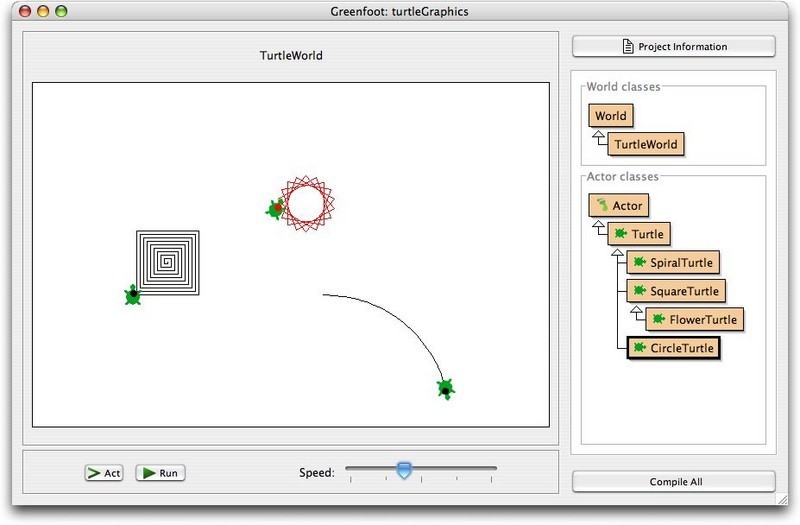

- #Greenfoot chapter 2 answers how to
- #Greenfoot chapter 2 answers software
- #Greenfoot chapter 2 answers code
- #Greenfoot chapter 2 answers professional

The goal of these languages was partly simplification: taking known concepts and avoiding the complications that could arise in other existing languages at the time. Among the early ones, BASIC (1964), Logo (1967), Pascal (1970), and Smalltalk (1972) stood out as the most used and most influential-all aiming at learners as their primary target group.
#Greenfoot chapter 2 answers software
The first pedagogically oriented software tools were programming languages and their associated compilers. This is where we will slow down and start discussion in more detail. We will not give a complete history of educational software here instead, we mention just a few influential early systems to arrive quickly at our destination: educational development environments for object-oriented programming.


However, pretty soon systems started to be developed that were designed partly or primarily with beginners as users in mind. In the early days, there was no difference between the tools used by professionals and the ones taught to newcomers. Ever since computer scientists started teaching others about programming, they started thinking about tools to support this challenge. They present their work in this area-frame-based editing-and suggest possible future development options.Įducational software tools are nearly as old as programming as a discipline. The authors also discuss current developments, and suggest an area of interest where future work might be profitable for many users: the combination of aspects from block-based and text-based programming. In this chapter, the authors describe their experiences with the design of three systems-Blue, BlueJ, and Greenfoot-and extract lessons that they hope may be useful for designers of future systems. New educational systems are currently being designed by a diverse group of developing teams, in industry, in academia, and by hobbyists.
#Greenfoot chapter 2 answers professional
In the past, professional environments were often used in programming teaching with the shift to younger age groups, this is no longer tenable. With the rise of programming as a school subject in ever-younger age groups, the importance of dedicated educational systems for programming education is increasing. More systems of this kind have been published in the last few years than ever before, and interest in this area is growing.
#Greenfoot chapter 2 answers how to
Last but not least, we have started to learn how to make decisions.AbstractEducational programming systems are booming. Documentation gives you a summary of the methods available for a class. We saw inheritance: classes inherit the methods from their superclasses. It’s not a sign of a bad programmer, it’s just a normal part of programming. This is super normal, and will continue to happen as long as you are programming. You might have had some programming errors. We also learned how to find the body of the act method, the place where we will start writing out instructions. We learned how to call methods (like move ()), and with or without parameters. What happens? Explain what you see, then fix it by putting move () back where it was. Write down the numbers and why you think they are good (justify your choice).Ģ.16 Try this: Put the move() statement inside the if statement instead of after it. Be very careful about the opening and closing brackets, you could easily miss one or have too many.Ģ.15 Try this: Use a bunch of different numbers for the turn parameter.
#Greenfoot chapter 2 answers code
You can see that the move() method call is outside of the if statement, so it is going to happen (be executed) no matter if we are near the edge of the world or not.Ģ.14 Try this: Go for it, type in the code you see above and see if the crabs will turn when they reach the edge of the screen. The body of the method is the two curly brackets of the if statement. The signature of the method is the first line. Inside this class definition there is a thing called the act method. These words control what the Crab does, and can and cannot do. This is a normal (standard) Java class definition. Do that by double clicking the class or choosing the Open editor function from the popup menu of the class. We will program the crab starting with movement. Remember the hierarchy arrows let you know that crab is an actor.Ĭrab doesn’t do anything because there is no source code to tell it what to do. With the scenario open, you should see the Greenfoot Actor class and the class called Crab. For this unit, open the scenario called little-crab.Ģ.1 Try this: Put a crab in the world and press run.


 0 kommentar(er)
0 kommentar(er)
